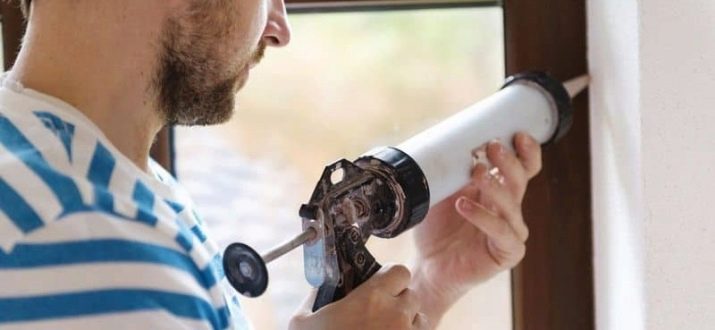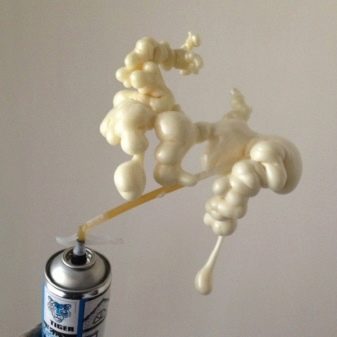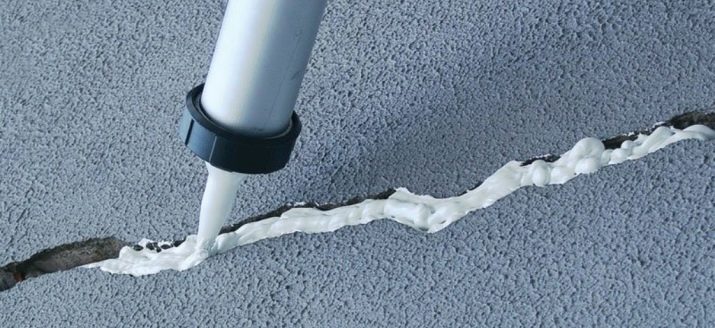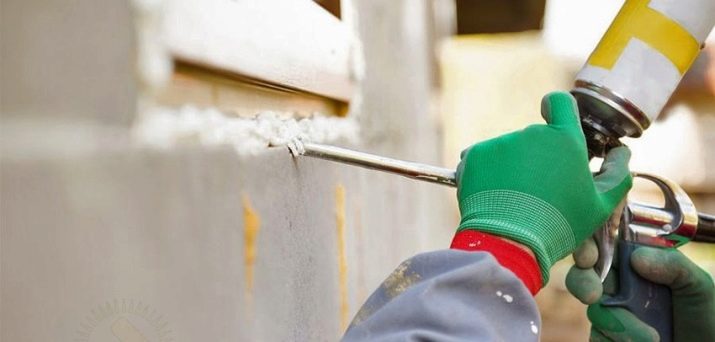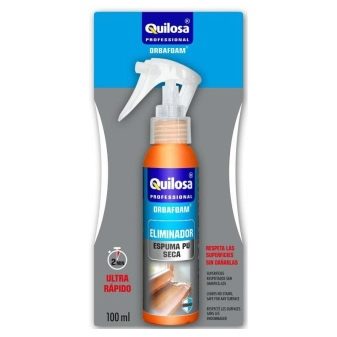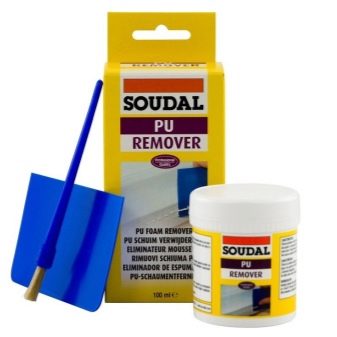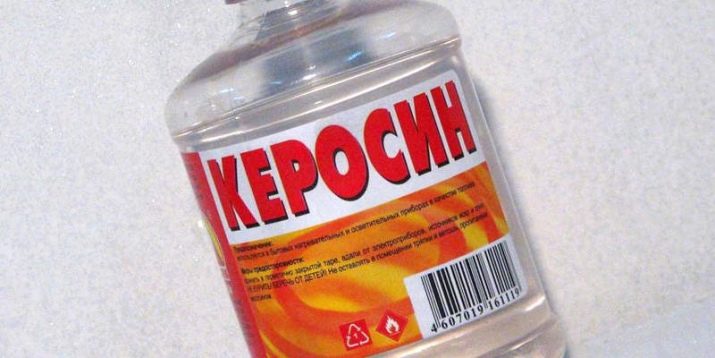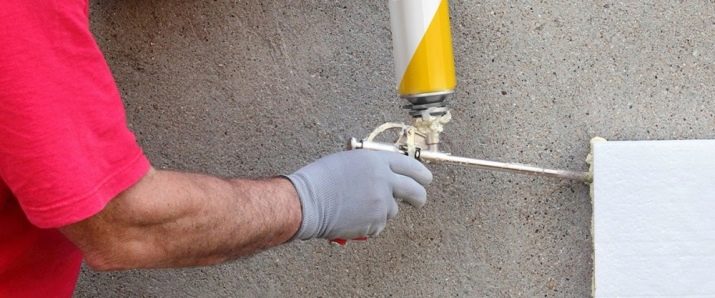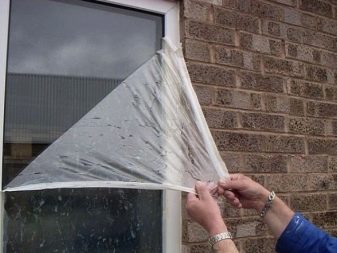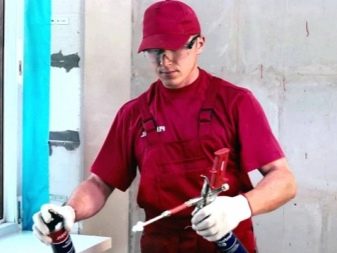How to wash the foam with hands?

Many homework related to construction or repair, due to the mandatory use of foam. Without this composition, install neither windows, nor doors, do not insulate the balcony, do not install pipes. It is famous both for its adhesive properties and for its ability to quickly dry out and eats into clothing, skin, and surfaces in an apartment.
Peculiarities of pollution
A person who does not understand the issues of repair and for the first time took a sealant to work, he is more likely to fall on his hands. Working with assembly foam without gloves and at the same time not getting dirty is very difficult. Even if a person has taken all precautions, then there is a chance that a couple drops of sealant will be on unclosed skin.
Polyurethane foam is a type of sealant, incorporating polyurethane. It is produced in the form of an aerosol and is used in almost every kind of construction and repair work. In a frozen form, such a composition becomes a solid polyurethane foam. The cylinder contains a mixture consisting of a liquid prepolymer and a propellant propellant. Due to the presence in it of this gas foam comes out. Freezing occurs through interaction with moisture, both on the surface and in the air in the room. Accordingly, the drier the air in the room, the longer the composition will harden. You can speed up this process by spraying the foam with water from a spray bottle.
As a rule, solid foam is almost white, with a slight shade of yellow. However, in case of ultraviolet rays falling on it, it turns yellow and loses its connecting properties. Weight of the composition is very small. In addition, the installation sealant is not water resistant. The adhesive properties are very high - the composition does not “work” on Teflon, polyethylene, silicone, polypropylene.
When working with foam, it is necessary to take into account its properties such as primary and secondary expansion. Primary - this is an expansion that occurs with the sealant immediately after its release from the cylinder. Secondary - until the composition is completely frozen. It can vary from 15 to 100%. In the case when the percentage of secondary expansion is large, you need to very economically apply the foam in those places where there is a possibility of its strong swelling and because of this deformation of the surface.
It is necessary to purchase sealant only from verified, certified sellers - this is the only way to avoid buying poor-quality or material stored in the wrong conditions.
Foam fill cracks and cracks in order to heat, sound and sound insulation. In addition, it fastens pieces of building materials. Previously, cement or tow was used for these purposes, but it took a lot of time and effort, and the quality of the adhesion of materials to each other sometimes left much to be desired.
At present, when a large number of new, natural and artificial materials have appeared, a better, faster and easier-to-use means is required for their bonding to each other. To work with mounting foam does not need training, and there is no need to use additional devices and tools - it is enough to purchase a cylinder, study the instructions for using the material and you can proceed to construction or repair work.
In order for the foam to harden properly and not lose its properties, you must follow the rules for working with it:
- The temperature should be in the range from +5 to +30 C.
- The coincidence of the primary and secondary expansion of the foam with the size of the hole to be embedded.If it is less than 1 cm, then it is better to use putty.
- Before starting work, the place where they will be made is sprayed with water - so the foam will better harden.
- Shaking the bottle must be done for at least a minute so that the entire contents become a homogeneous mass and mix qualitatively.
- After applying the foam it must be sprayed with water again.
- Add a sealant in case it seems that it was applied a little, you need no sooner than half an hour.
Of course, it is best to use thick rubber gloves when working with this type of hermetic mixture and wear working clothes that you shouldn’t get dirty and discarded in case of an unusual situation. But even then there is a chance that a drop of sealant will fall on the skin. In this case, the foam closes the access to air, which can cause serious allergic reactions. Therefore, it should be washed quickly and painlessly, without damaging the skin.
Hair must be fully covered. You can use the usual knitted hat or shower cap. From the scalp of the head sealant will have to be removed only with the hair.
Some experts recommend in order to avoid sticking of the hermetic composition to the hands to lubricate the skin with vegetable oil or petroleum jelly. However, this is not very convenient. In addition, to wash at the end of work all that touched by greasy palms, is also problematic. Therefore, this advice is not widely spread among those who know a little about repair and construction work.
What can wipe off?
It is much more difficult to remove mounting foam from skin than from clothing or surfaces in an apartment. Therefore, you need as much as possible to protect yourself from the likelihood of such situations.
Polyurethane foam can be either fresh or frozen. The easiest way is to purchase a special cleaner for it when buying a sealant. It is usually also an aerosol.
If the sealant gets on the clothes, you must first remove the foam cap so that it does not soak into the fabric. This can be done with a knife or trowel. A piece of clean rags should be soaked with cleaner and blot a piece of fabric on which the foam fell. We must act quickly. After that, you need to immediately wash the clothes using a large amount of washing powder.
If for any reason a person did not have a cleaner, then petrol, white spirit or even nail polish remover with acetone will be suitable for this purpose. But here, great care will be needed not to harm the fabric, since all the listed substances contain elements that can change its color. It is better to first try to clean a small section of the material to make sure that the composition does not harm him.
If a dried spot of foam is formed on things, then you need to hang this thing outside - under the influence of the sun's rays, the sealant will break down and gradually move away from the fabric.
There are compounds suitable for cleaning and fabrics, and surfaces. They are usually purchased at a hardware store.
- For example, Orbafoam Eliminador. It is produced in the form of a spray, removes dried and old spots. But it can not be sprayed either on plastic or on painted or polished surfaces.
- Pu Remover. It is a paste that also copes well with frozen foam. The composition does not smell, complete with a brush and spatula sold - they can clean the surface of aluminum and all artificial materials. Porous surfaces can be damaged by a spatula, as well as bronze, zinc or copper.
As soon as the composition got on your hands, you should immediately try to clean it, not allowing it to dry out. To do this, take a clean napkin or cloth and move the foam from all sides in the center. After that, you need to pick up immediately the whole lump. Smearing is not recommended under any circumstances. After that, hands should be washed thoroughly.
In addition, traces of hermetic composition can be scrubbed from hands by means of acetone, kerosene, salt and scrub.
Cleaning methods at home
Sealant can be both fresh and dried. Fresh foam can be removed with a special solvent. In addition, in order to independently clean the hermetic composition of the house, there are several ways:
- With the help of medical alcohol with a concentration of 3%. A cotton ball needs to be wetted in it, after which it is necessary to wipe your hands gently: for the most part those areas that are covered with foam. This method is ineffective if the composition has already begun to be absorbed and dry.
- Using acetone, including nail polish remover. First you need to very carefully and slowly remove the foam with a cotton pad dipped in it, and then thoroughly wash your hands with warm water and soap.
- In a similar way, you can wash off traces of foam with kerosene. As with acetone, it is better to use it outside, since both liquids have a peculiar odor.
- In order to remove the foam from the skin of your hands, you can use warm vegetable oil. This tool will help in a few minutes to destroy all traces of sealant on the hands.
- Hands can also be cleaned with a handful of rock salt. To do this, rub them thoroughly, then rinse in running water. May need to repeat the procedure.
- To remove the foam, you can use a hand scrub (or feet) with large abrasive particles. You can also try coffee cake, for example, from the coffee machine. You need to massage their hands for 1-2 minutes, then rinse with plenty of warm water.
- You can improve the previous method by adding liquid soap or household shavings instead of salt - this method helps in washing out fresh stains.
- The drug "Dimexide" is also well cleaned hermetic mixture. But since it is perfectly absorbed into the skin and has a considerable number of side effects, we must act with great caution. If there are allergic reactions to the components of the drug, then use it in any case impossible. And for cleaning walls, furniture, floor, it is perfect.
Solvents do not take hardened mounting foam - this is mentioned in every instruction manual. In this case, only a mechanical effect is suitable - you can use pumice, a stiff brush or soft sandpaper. Hands in this case it is better to protect the fat cream, otherwise you can seriously scratch the skin. A large amount of soap should be applied to the brush or pumice stone, after which you should start scrubbing, but not very strongly, avoiding skin damage. Periodically should be renewed layer of cream (preferably when it contains aloe), so that the skin does not remain unprotected.
To speed up the process of cleansing, you can gently scrape the skin with nails. But this method is unpleasant and requires a large margin of patience.
Better yet, steam your hands in hot water containers. Keep your hands in the bath should be at least 10 minutes, the water temperature should not be below 45 C. If you dissolve a tablespoon of salt in water, the cleaning process will go faster. After all traces of the foam are wiped off, hands should be spread with a thick layer of cream.
If the sealant has dried on the clothes, most likely it should be “written off” as a worker. Erase traces of foam without harming the fabric will not work. You can try to scrub it with a sealant cleaner, trying to apply it only on stains with a cotton pad or stick.
You can also find the following recommendation: put soiled clothes in the freezer, and then try to clean them. It may work a principle that is suitable for clay and chewing gum, and the pieces of sealant will move away from the frozen tissue.
In addition, small drops of sealing material can be tried to remove with a needle or nail scissors, and best of all with a tool for trimming the cuticle, since it has sharper and thinner blades. You need to very carefully pick up the base of the drop and at least gently detach it from the fabric fibers.
Useful tips
If all the methods proposed above did not give a positive result and it was not possible to clean the foam from your hands - no need to despair, because after 2-3 days, the remnants of the material will move away from the skin, as the epidermis is constantly updated.
In no case can acids and alkalis (Domestos, Whiteness, acetic acid, bleach) be used to remove traces of this kind. They cannot cope with the sealant, since neither acid nor alkali dissolves it. But the skin can easily burn and then for a long time to eliminate the effects of this burn.
When starting to work with a sealant, it is imperative to ensure that all surfaces that may be damaged are safely covered. You need to close the material, which at the end of the work could be rolled up and thrown away: with polyethylene, newspapers, paper, and sheets of cardboard.
Be sure to wear working clothes or one that is not already in use, cover your hair with a scarf, hat or other headgear, allowing you to tightly close the entire scalp. You need to wear thick rubber gloves on your hands. These measures minimize the possibility of polyurethane foam getting into open skin.
You can invite a partner (especially in the case when the work is to be large-scale), so that there is a chance to react quickly if something goes wrong.
In case of mounting foam on clothing, leather or the surface of the floor, wall or ceiling, you need to act as quickly as possible, not allowing the composition to absorb and dry. In this case, it is likely that all work will take place without unpleasant incidents.
To remove the foam from your hands, see the following video.
